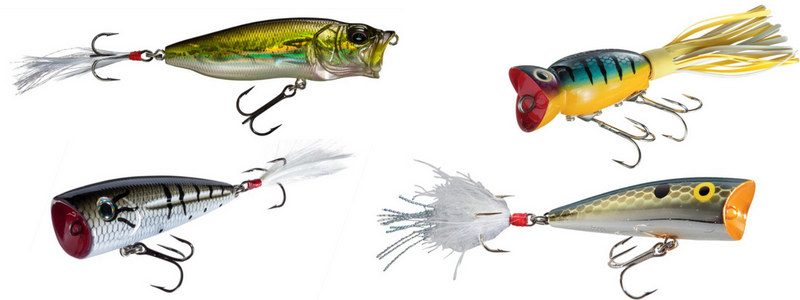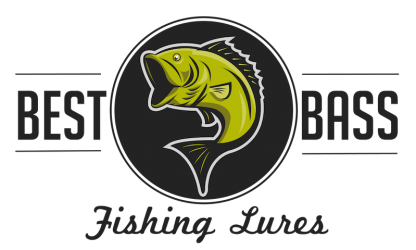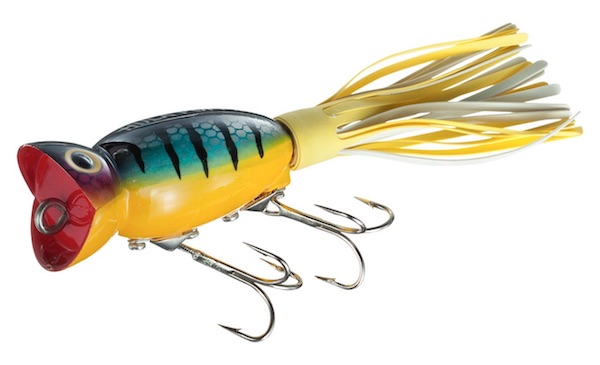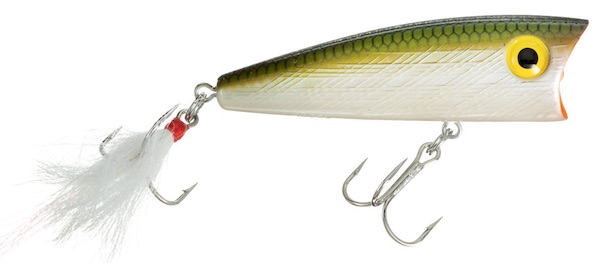
Topwater poppers go back to the earliest days of bass fishing. They are one of the oldest styles of bass lures still being made today, and still effectively catching fish. Over the years these lures have evolved in to all different shapes and styles, but what they all have in common is a bowl-shaped face on the front of the bait. This is what makes them “pop”.
Poppers are categorized as topwater lures, that when worked correctly makes a bass-attracting noise on the surface. It’s simply a splashing noise created when the lure is jerked, from the bowl-shaped mouth plowing across the water’s surface. There are different shapes, styles, and sizes that put out difference noises, but at the end of the day they are all designed to mimic a struggling baitfish on the surface.
One bait that has been around decades and still one of the best poppers is the Rebel Pop-R. This is your classic spitter-style popper lure and our number one choice for topwater poppers.
Types of Poppers
Although there are many different popper lures out there, there are two ways to categorize them: Chuggers and Spitters. They appear to be pretty similar, but the noise and disturbance they create on the surface is what makes them different. Lets start with chuggers…
Chuggers
These are your classic popper lures, designed to make that “pop” noise on the surface. When they are pulled forward in a jerking motion, they plow the waters surface and create a bubble/dome of water over the bait.
It’s when the bubble bursts that it creates the popping noise, it’s similar to the sound of a water drop. The motion also makes a round rippling ring of water around it. A classic example of a chugger is the Hula Popper in the photo above.
Spitters
This style popper is slightly different than chuggers. It has a similar shape and design as a chugger, but if you look closely you’ll see that the shape of the mouth is not symmetrical. The top part of the mouth sticks out further in front of the bait than the bottom, preventing a perfectly round bubble to be created.
Instead it spits the water out in front of the bait, hence the name spitter. This the water spitting out in front of the bait puts out a different, slightly softer sound. There are times when a spitter will outperform a chugger and vise versa. The Rebel Pop-R in the photo above is a great spitter.
Some spitters have a hole in the mouth of the bait that exits out the top. This makes the water shoot out the top as the bait pushes forward. Again, a slightly different sound. Bass can be ver particular in what they want on a specific day so it’s nice to have options.
Fishing Popper Lures
Poppers are one of the easiest bass lures to fish, so they make great lures for beginners. This is because there is no finesse or careful strike detection required to effectively catch bass with a popper. For a basic retrieve, you simply cast it out and give the rod a solid jerk every so often. While the lure is at rest you reel in the slack line.
And as long as you’re paying attention you will be able to see when you get a bite. Unlike other lures, you don’t need to have full concentration on the feel of the rod to detect bites. The bites can either be explosive or subtle, but either way you should be watching your bait closely to know when to set the hook.
Like with all topwater lures, the wind speed and amount of ripple on the surface will tell you how fast you should be fishing a popper. If there is a lot of wind and a decent chop on the surface then without question you want to fish a popper fast. Bass are hardly going to notice a slow-action popper on a rough surface.
If the surface has a light ripple or flat calm then you want to slow it down, but start with a moderately fast retrieve and slow down from there. Just because it’s calm doesn’t mean slow is the best retrieve. It’s best to start fast and slow it down until you start to get some activity.
If bass are active they are going to attack the quicker action, and the faster you can retrieve the bait the more water you can cover. Continue casting while increasing the pause time between jerks, this is how you will narrow down how active bass are feeding.
Don’t be surprised if it takes up to ten seconds to even a minute before bass will begin to strike. Sometimes bass will stare at a floating popper for a stretch of time and the sudden pop can trigger a reaction strike.
A good rule-of-thumb is to cast the popper out and after it splashes in the water, let it float there until all the ripples on the surface have disappeared. Then give it a good jerk and wait until the ripples disappear again.
This is usually a good length of time for a pause period. Some strikes occur randomly while the lure is floating there, so always be ready to set the hook.
Like all topwater lures, poppers are most effective in low light conditions like early morning, later afternoon, night, and overcast days. They are especially good during the summer mornings and evenings.
Poppers are far from weedless so unfortunately you won’t be able to get in to some of the prime areas with them. But you definitely want to fish them as tight to cover as you can. Working a popper tight to patches of lily pads is very effective.



